7 tips to know to manage files on Android
To keep track of this significant amount of data on your Android device, you need a file manager app that allows you to manage and organize the data inside your phone's internal or external storage.
A file manager not only allows you to organize your files, but also does much more (discussed below). Here are the absolute basics of file management on Android phones that you need to know.
1. Which file manager application do you use? Default or third party?
As mentioned above, your files are accessible through file manager apps on your phone. Android devices always come with a built-in file manager, usually developed by the device manufacturer. Many users find these native file managers less effective, as they lack some advanced features. And that's why many people choose third-party file managers.
Over the years, Android developers have published a large number of useful file managers, and Google also has a file manager, called Files by Google. It is a third-party application on most devices but is also pre-installed on some devices these days. The application has a lot of great features that you may not find in the original file managers.
There are other all-in-one file managers that offer folder organization, compression, and file transfer.
2. How to find files on Android
Finding files from gigabytes of data can be frustrating. You must have encountered a situation where you downloaded a file from the Internet and that file disappeared somewhere in your subfolders. In such cases, you may not know where to start looking for it.
Modern file managers like Files by Google work automatically based on AI to help pin recent files to the top. So if you downloaded or created a file recently, you can easily find it in the Recents section.
If you're looking for an older file, go to the Browse tab at the bottom and then tap the Search icon at the top of the screen. You can now search for your file by typing its name. You can also apply a file type filter to narrow down your search results.
 7 tips to know to manage files on Android Picture 1
7 tips to know to manage files on Android Picture 1
3. How to rename files
Renaming files is a common operation to organize files or avoid duplicate names. Renaming sounds simple, but it can cause a lot of problems. For example, if you try to rename an image, you might change its file format, which may cause it to not open.
To safely rename a file, open the app and locate the file. Now, tap the three-dot icon on the side to open the drop-down menu. Select Rename from there.
A pop-up window will appear allowing you to edit the name. To prevent any harm to the file, it will only highlight the name of the file to be edited while ignoring the file type like PNG, PDF or MP3. Do not change the file type, or your file will not work.
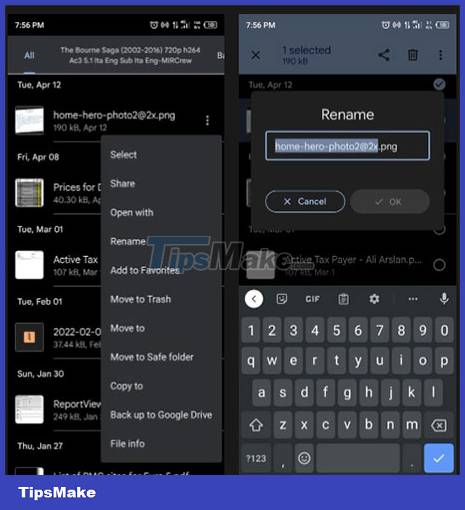 7 tips to know to manage files on Android Picture 2
7 tips to know to manage files on Android Picture 2
4. How to move, copy and paste files
The most common operations in file managers are copying, pasting, and moving files. Files by Google provides a simple way to do these operations.
To move a file, find it and tap the three-dot button next to the file. Select Move to from the drop-down menu and select a destination storage location, such as internal storage or SD card. Then, select the desired folder where you want to move the file and click Move here.
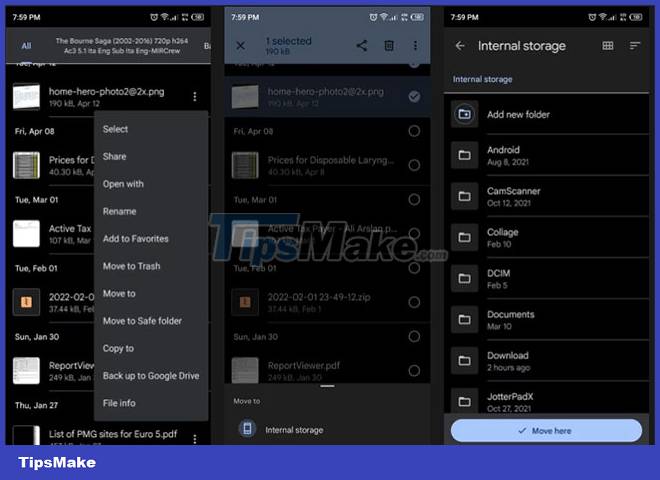 7 tips to know to manage files on Android Picture 3
7 tips to know to manage files on Android Picture 3
The process is the same as moving if you want to copy and paste your files. Select Copy to from the drop-down menu and select the folder where you want to copy the file. Then click Copy here to complete the operation. Copying creates a copy of the file.
5. How to create folders on Android
To organize files, you need folders to store them separately. Creating folders is quite simple and there is no limit to the number of folders you can create.
To create a new folder, select the storage device at the bottom of the Browse tab on which you want to create the folder. It can be internal storage or external storage like SD card.
Now, tap the three-dot button in the top right corner of the screen. From the list of options, tap Add new folder. Then a pop-up window will appear asking you to enter the folder name. Give it a name and click Create Folder.
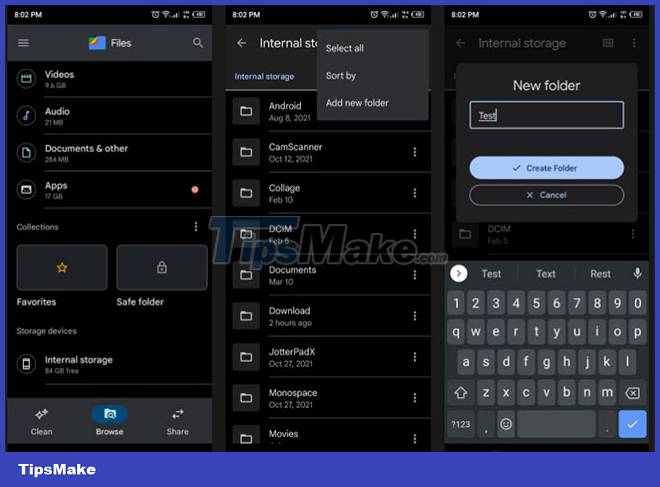 7 tips to know to manage files on Android Picture 4
7 tips to know to manage files on Android Picture 4
Once a folder is created, you can move, copy, and rename the folder the same way you would with a file, as outlined above. You can also check directory information, such as location and creation date.
6. How to compress files
Another common operation is to compress the file into a zip file. Compression reduces file size, convenient for emailing and sharing.
To compress files on Android, you need a compression application like WinZip. In the app, select all the files and folders you want to compress.
Click the three-dot button and select Zip to here. Name your zip file and click OK. This will compress all the selected files in a new zip file in the exact same location as the original files.
You can open zip files with Files by Google. Locate and tap on it. A pop-up window will appear. Click Extract and your files will be extracted as before compression.
 7 tips to know to manage files on Android Picture 5
7 tips to know to manage files on Android Picture 5
7. How to share files
Now that you know the basic operations of a file manager, the next thing is to share your files with others. Files by Google has two main options for this problem.
The first option is to find the file and click Share in the drop-down menu. This gives you the option to share files via Bluetooth and social networks. Choose the option you want and share files with your friends and family.
Files by Google has another option for you called Nearby Share. This option is quick and simple. All you have to do is open the app and navigate to the Share tab. Click Send and then select the file you want to transfer to another device. Note that the receiving device also needs to have Nearby Share.
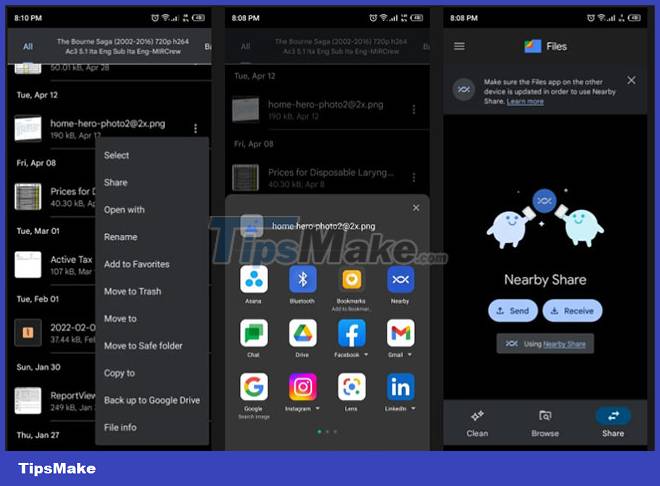 7 tips to know to manage files on Android Picture 6
7 tips to know to manage files on Android Picture 6
Once the file is selected, press Send and the app will scan for nearby devices. Tap the receiving device and your file will be sent instantly. This feature is much faster than Bluetooth.
In addition, you can refer to: Top 10 good file management applications on Android.
You should read it
- Top 5 Best File Manager Apps on Android
- Share files between your PC and smartphone Android effectively with Asus File Manager
- 3 best file management applications for Android TV
- The application to transfer data via WiFi on Android professionally
- How to use Files Go to manage files, share data on Android
- Top 10 good file management applications on Android
- 9 outstanding features of Solid Explorer you may not know
- Total Commander is forbidden to install APK files on Android
- TOP 7 apps that support the best download on Android
- 7 useful apps to manage SIM on Android
- Create and manage RAR files on Android like on a computer
- Managing tasks on Android easily without Task Killer
May be interested

How to convert MOV files to MP4 on iPhone for free

TOP essential apps when using Android phones

How to turn on dark mode by tapping on the back of iPhone

How to zoom in on a specific location in a screenshot on iPhone

How to create shortcut to take selfie/video on Android home screen

Use Find My to remotely check iPhone or iPad battery




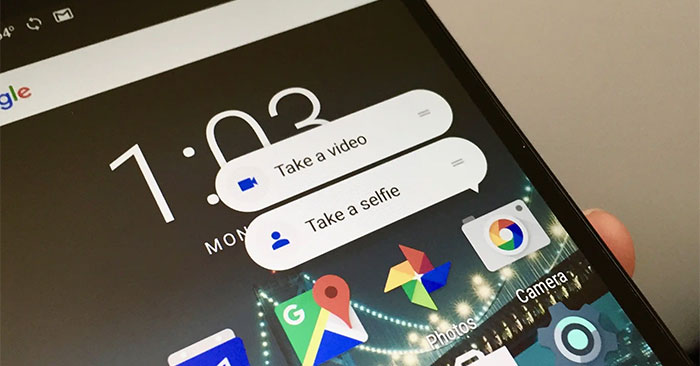

 Create and manage RAR files on Android like on a computer
Create and manage RAR files on Android like on a computer Quick file search application on Android
Quick file search application on Android How to use Files Go to manage files, share data on Android
How to use Files Go to manage files, share data on Android Manage email on Android device
Manage email on Android device Managing tasks on Android easily without Task Killer
Managing tasks on Android easily without Task Killer How to hide important data files and applications in Android devices
How to hide important data files and applications in Android devices